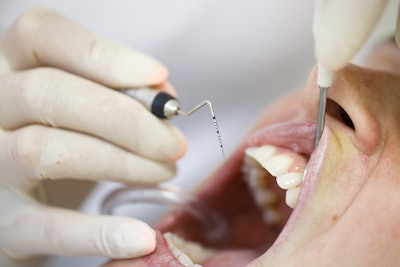
Sleeve gastrectomy (SG) may improve periodontal health in patients with and without type 2 diabetes (T2D) largely due to a significant reduction in inflammatory biomarkers, according to a study published in Frontiers in Endocrinology.
Although patients with T2D experienced less weight loss, their periodontal health greatly improved following SG, the authors wrote.
"Both patients with and without T2D demonstrated improved periodontal status for up to 1 year after SG," wrote the authors, led by Xiaocheng Bi of the Shandong University Cheeloo College of Medicine in China (Front Endocrinol, August 14, 2024).
In the study, participants scheduled for SG between April and December 2022 were evaluated for eligibility. SG was indicated for patients with obesity-related complications or more than two metabolic syndrome components.
The inclusion criteria were a body mass index of ≥ 32.5 kg/m², an age ranging from 18 to 60 years old, a diagnosis of periodontitis, and at least 16 remaining teeth. The study included 57 patients in the diabetic (DM group) and 49 in the nondiabetic control group. Preoperatively, patients in the DM group had more severe periodontal disease compared to the control group, the authors wrote.
The primary outcome was the periodontal status of patients 12 months after SG. Secondary outcomes included weight loss, diabetes remission, and changes in inflammatory markers over one year. Levels of inflammatory markers, including high-sensitivity C-reactive protein (hs-CRP) and interleukin-6 (IL-6), were measured.
At baseline, patients in the DM group exhibited higher levels of probing depth (PD) (4.10 ± 1.08 vs. 3.68 ± 0.87, p < 0.05), bleeding index (BI) (2.67 ± 0.68 vs. 2.13 ± 0.71, p < 0.01), and clinical attachment loss (CAL) (2.04 ± 0.96 vs. 1.69 ± 0.61, p < 0.05) compared to the control group, indicating worse periodontal health in patients with T2D, the wrote.
Following SG, both groups experienced significant reductions in plaque index (PLI) and BI, with no changes in PD and CAL for up to one year. The DM group achieved a lower total weight loss percentage (32.79 ± 6.20% vs. 37.95 ± 8.34%, p <0.01) but a greater improvement in periodontal health, with no significant differences in PLI and BI between the groups at one-year post-SG. Additionally, both groups exhibited significant reductions in hs-CRP and IL-6 levels one year after SG, according to the results.
However, the study had limitations. The generalizability of the results is limited by the single-center design and the relatively short follow-up period of one year, the authors added.
"The significant reduction in the inflammatory biomarkers, including hs-CRP and IL-6, contributed to the improvement of periodontal status after SG in both groups," Bi and colleagues concluded.




















